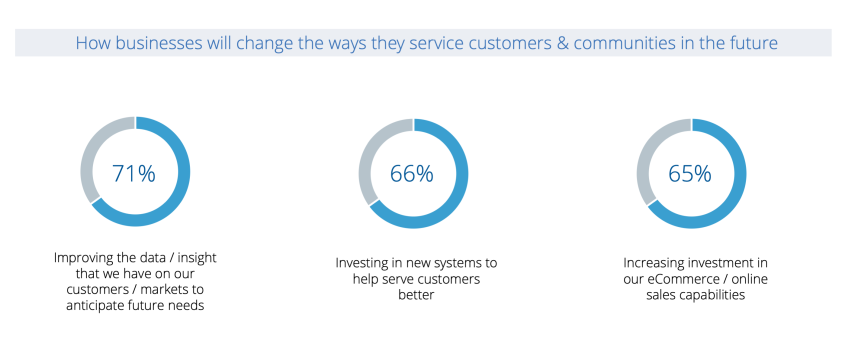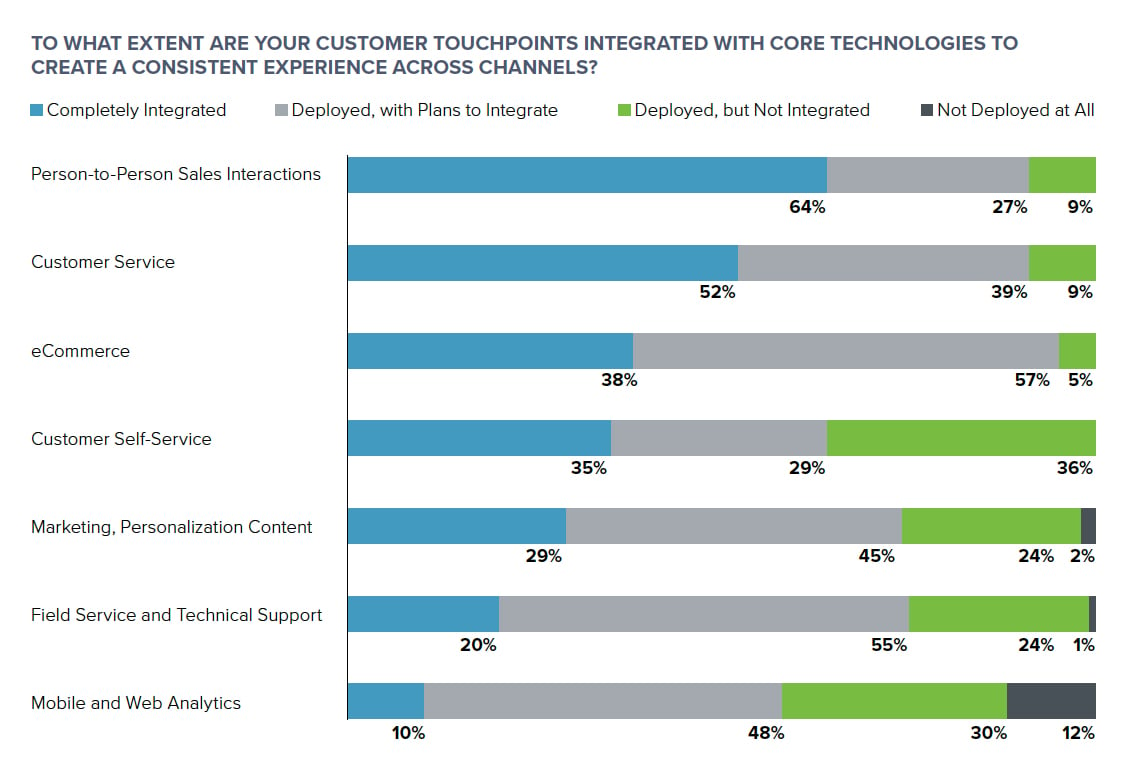In the B2B world, the digital transformation is upon us.
Okay, okay…this isn’t exactly news to anyone — especially having just gone through two years of recurring worldwide shutdowns.
(Even before the pandemic, 70% of companies had adopted digital transformation in some way or another. By mid-July 2020, 96% of sales teams had moved their processes online — with nearly 80% planning to keep things that way moving forward.
To be sure, today’s B2B companies are not the digital laggards they once were.
That said, it’s still not uncommon for teams to misunderstand what digital transformation is all about. Here, we’ll address the key misconceptions that continue to hold many B2B sales teams back from their true potential.
What Digital Transformation Is "Not"
Before we discuss what digital transformation should “look like” within your organization, let’s talk about what it isn’t.
Digital Transformation Isn’t Siloed
Neither your team’s digital operations nor your customers’ digital experiences should be separate from your traditional operations.
In a practical sense, this can hinder your team’s or your customers’ ability to accomplish their intended tasks. A siloed digital presence also makes your customers’ overarching experiences with your brand more rigid — and much less immersive.
Digital Transformation Isn’t Superfluous
You should also never see your brand’s digital presence as inconsequential to your overall operations.
Again, most companies understand this by today’s standards.
Still, B2B teams that have only recently made the leap to digital are especially prone to deprioritizing their ecommerce presence over time. This can ultimately lead to innumerable missed opportunities for your team.
Digital Transformation Isn’t Limited
Limiting your digital operations to certain functions is a recipe for disaster.
Unfortunately, we often see teams offer most of what’s considered a comprehensive digital experience — but falling short in critical areas like sales and support.
A common example: Requiring hands-on engagements to process sales or submit financing applications. To be blunt, there’s very few excuses for not automating these processes altogether.
Now, you don’t necessarily want to eliminate your traditional processes altogether.
Still, maintaining the status quo in some areas while undergoing digital transformation in others will ultimately hold you back from your true potential.
Digital Transformation Isn’t Reversing
Remember how we said that 80% of B2B teams plan to continue investing in their digital transformation initiatives? That means there’s little chance of the B2B realm reverting to a pre-digital, pre-ecommerce norm. There’s also that 20% who still has yet to get on board as the industry continues to evolve.
What Digital Transformation "Is"
Okay, so we know what digital transformation should not look like for your sales team or your customers.
Now, let’s look at what it should entail.
Digital Transformation Is Integrated
Integrating your new digital processes into your current operations is a critical step toward true digital transformation.
Unfortunately, many B2B teams — especially those who still rely on outdated legacy systems — face an uphill battle in this regard. In many cases, teams just aren’t equipped to create a truly integrated system just yet.
(As mentioned above, this siloed approach causes friction for both teams and their customers.)
That said, this will be a key battleground in the B2B world moving forward. Making the leap from multi-channel to omnichannel operations will allow you to provide a cohesive experience to your customers.
At the very least, today’s B2B customers expect to be able to register and sign into their account from any web-connected device. With this, they should be able to pick up where they last left off with your brand during their last engagement — regardless of what channel they’re using to engage with your team.
(This is especially true when transferring from digital or automated engagements to in-person conversations. More on this in a bit.)
Digital Transformation Is Intentional
Long gone are the days when simply having a website was enough to attract, engage, and sell to your customers.
Just because you build it, doesn’t mean they’ll come.
Rather, the digital experience you provide your customers needs to cater to their specific needs, desires, and expectations. Similarly, any internal efforts toward digital transformation should be made with specific intent, and backed by clearly-defined rationale.
(In other words, you should never adopt digital tools or processes for the sake of doing so.)
At the heart of this intentionality:
Data.
Whether looking at improving team performance, customer experience — or both — it’s vital that you make decisions wholly based on data.
With this hard data in hand, you’ll be able to answer key questions surrounding your digital efforts, such as:
- What problem(s) are we looking to solve?
- What technology is needed to help solve this problem?
- How will we inject this tech into our current processes to supercharge operations?
This will help you stay focused on making changes that actually matter to your team and your customers — and avoid overwhelming your stakeholders with superfluous tools that add nothing to your business.
Digital Transformation Is Efficient
Tying the last two points together, your digital transformation efforts should always make things more efficient for your customers and your team.
(Again, you never want to make a change or add a tool to your processes without a clear-cut reason for doing so.)
Automation is essential here — especially for customer interactions.
Credit Key, for example, automatically processes credit applications at the point-of-sale.
Some other areas where automation is crucial:
- Delivering dynamic, behaviorally-triggered emails
- Providing automated customer support
- Customer hand-offs (for sales, service, or other purposes)
Basically, if it can be automated, it should be. In automating and otherwise optimizing your digital processes, your team will have more time and resources to invest into the tasks that do require a hands-on approach.
Digital Transformation Is Ever-Evolving
Going all-in on digital transformation isn’t a “set it and forget it”-type deal.
(And treating it like such will likely cause your team to revert to the “old way” of doing things — which won’t be good for your business in the slightest.)
Rather, committing to digital transformation means committing to continuous development of your digital processes. It means never being content with the status quo — and instead always being on the lookout for new, impactful ways to inject technology into your operations.
The fact is, nearly all B2B teams are onboard with digital transformation in some way or another. But it will only be those who are constantly looking to the future that will survive long enough to make it there.
Matthew Osborn
For the better half of a decade, Matthew has been submerged in the B2B Payments and Accounts Receivable as a Service space. As the Marketing Director of Credit Key, Matthew has an in-depth knowledge of sales and demand generation growth strategies.
View All ArticlesTopics from this blog: E-commerce B2B Sales


